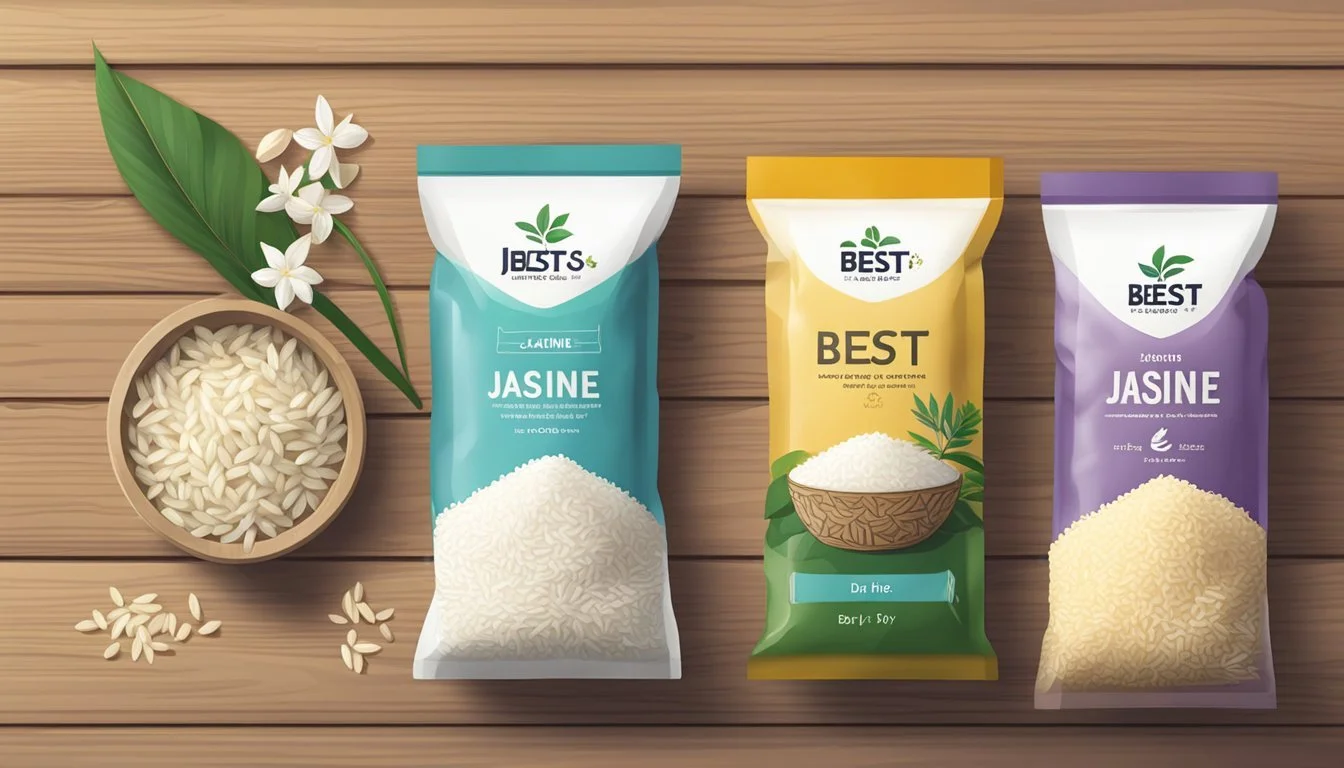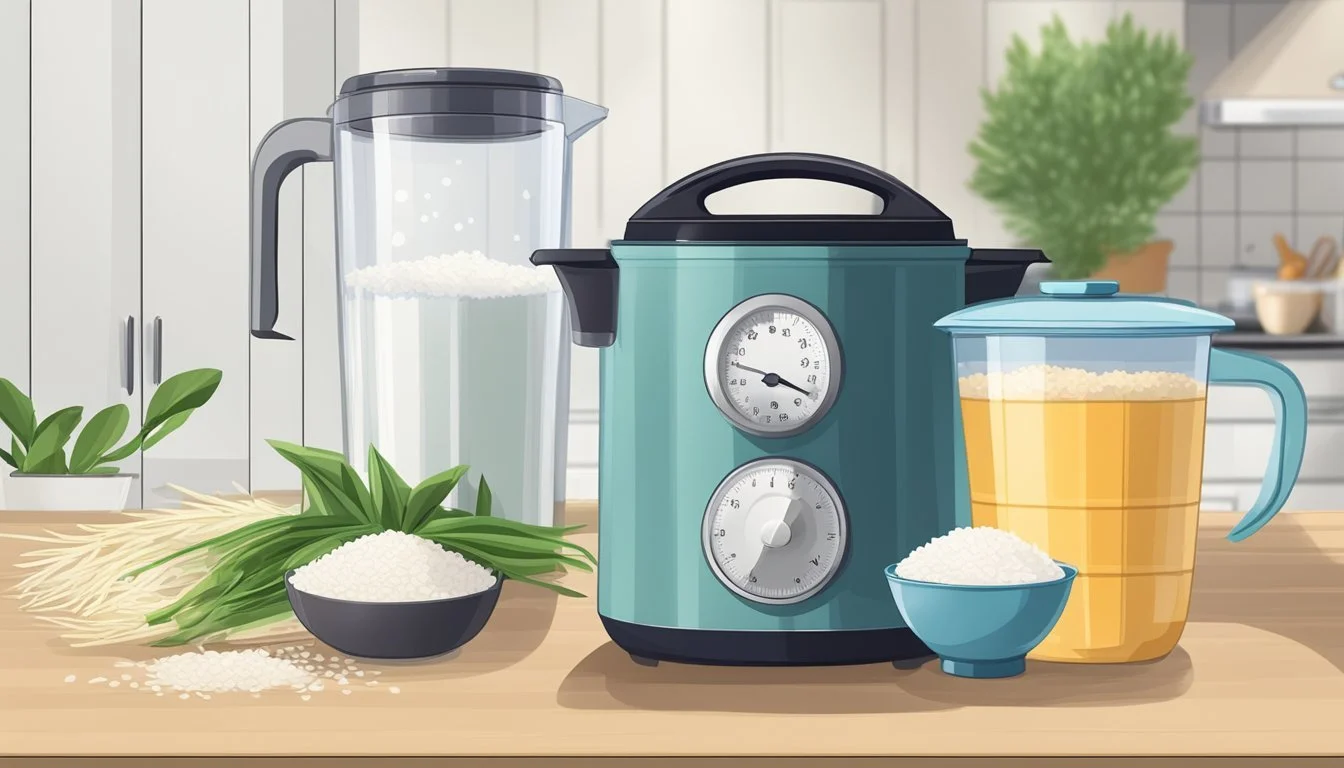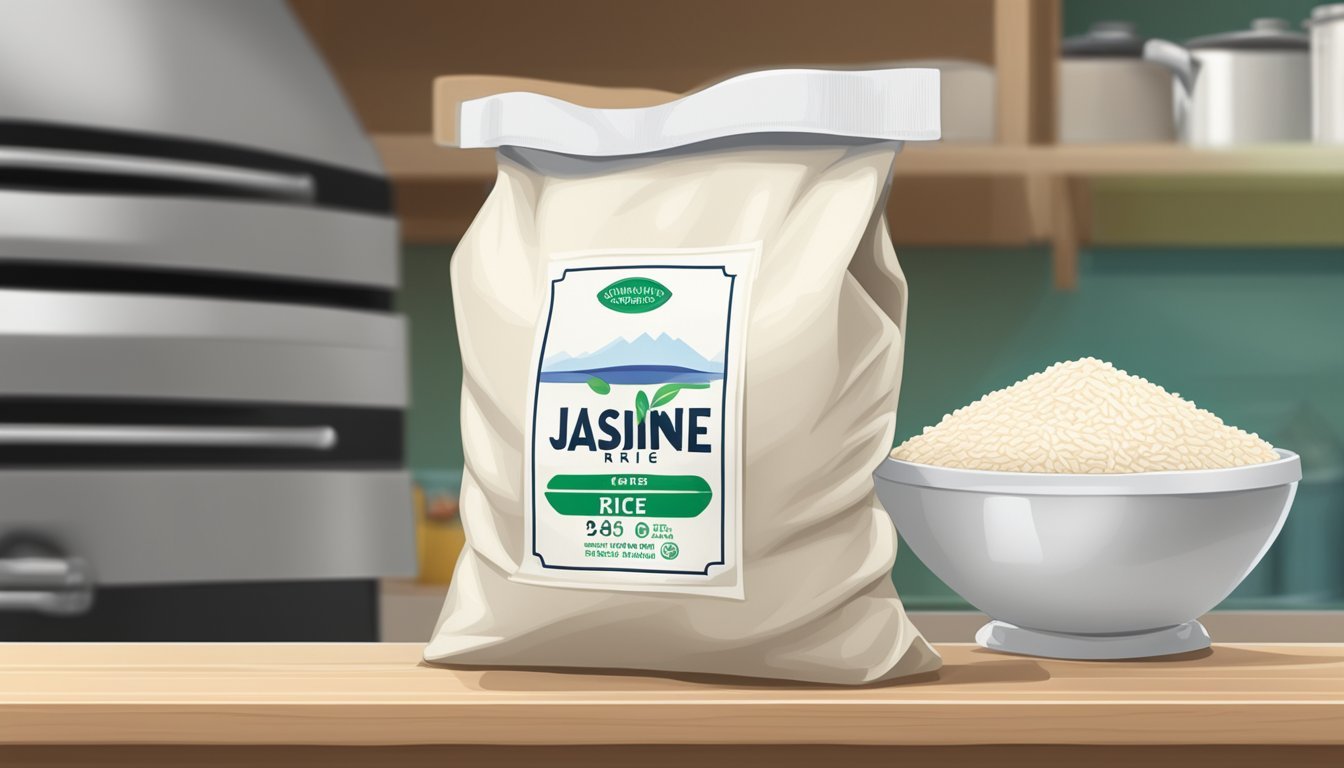How Long Does Jasmine Rice Last?
Shelf Life and Storage Tips
Uncooked jasmine rice (how long does jasmine rice last?), known for its distinct aroma and delicate flavor, is a staple in many households and can maintain its quality for a long time if stored properly. When kept in an airtight container or its original sealed packaging, jasmine rice (What wine goes well with rice?) has an indefinite shelf life. This resilience is thanks to the lack of moisture and oils which are typically what cause food to deteriorate. It's crucial to store it away from heat, light, and moisture to prevent any degradation of quality.
Once cooked, jasmine rice's shelf life is significantly reduced. It is safe to store in the refrigerator for 4 to 6 days, ensuring it's promptly refrigerated after cooking, preferably within two hours. For extended storage, cooked jasmine rice can be frozen for up to six months. In all cases, it's important to store the rice in airtight containers to prevent contamination and odor absorption.
To determine if jasmine rice has spoiled, one should look for signs such as an off-odor, discoloration, or a moldy appearance. If the texture of the rice is slimy or gritty, it's a clear indication that it's time to discard it. Eating spoiled rice can result in foodborne illnesses, so it's best to err on the side of caution.
Types of Jasmine Rice
Jasmine rice, primarily cultivated in Thailand, is a type of long-grain, fragrant rice known for its floral aroma and delicate flavor. White jasmine rice is the most common variant, processed to remove the husk, bran, and germ, resulting in grains that cook up fluffy and soft.
Alternatively, brown jasmine rice retains the bran layer, being a whole grain that provides more fiber and a nuttier taste compared to its white counterpart. Brown jasmine rice also has a slightly chewier texture and may require a longer cooking time.
While often compared to basmati rice, another popular aromatic grain, jasmine rice is distinguished by shorter, plumper grains and a stickier texture after cooking. Basmati, on the other hand, often used in Indian and Pakistani cuisine, is a long-grain rice that remains distinct and less sticky.
Here's a comparative look at these rice types:
Rice Type Grain Length Texture Flavor/Aroma Origin White Jasmine Long-grain Soft, sticky Floral, fragrant Thailand Brown Jasmine Long-grain Chewy Nutty, fragrant Thailand Basmati Long-grain Fluffy Aromatic, nutty India/Pakistan
When discussing jasmine rice, it's important to note that both white and brown varieties are gluten-free and can be used interchangeably in recipes calling for jasmine rice, adjusting the cooking method accordingly for brown jasmine rice due to its whole grain nature.
Storing Uncooked Jasmine Rice
When storing uncooked jasmine rice, the shelf life can be significantly extended by keeping it in a cool, dry place. An unopened package of jasmine rice can maintain its quality for years under optimal storage conditions.
Pantry Storage
For pantry storage, uncooked jasmine rice benefits from stability at room temperature. The ideal condition is a dark and dry place away from any sources of heat or moisture which can compromise the rice's quality. In such an environment, jasmine rice can remain good for years, as it doesn't spoil easily.
Do:
Keep uncooked rice in a cool, dark pantry.
Ensure the storage area is dry.
Don't:
Expose to direct sunlight.
Store near sources of moisture.
Cool Dry Area
Storing jasmine rice in a cool, dry area helps in maximizing its shelf life. The absence of excess heat and humidity prevents spoilage and maintains the rice's texture and flavor. It's beneficial to place jasmine rice in an airtight container after opening to protect it from environmental factors.
Maintain a consistent and moderate temperature.
Use airtight containers to store the rice after opening.
Original Package Protection
Keeping uncooked jasmine rice in its original package can provide adequate protection if the packaging is sealed and intact. For added security, one can utilize a resealable heavy-duty freezer bag to prevent air and pests from getting into the rice.
Keep rice in its original packaging if unopened.
Consider a heavy-duty resealable bag for opened rice packages.
Preserving Cooked Jasmine Rice
Proper storage of cooked jasmine rice is essential to extend its shelf life while maintaining its quality. Two effective methods include storing it in the refrigerator and using freezer storage. Each method requires the right approach to ensure safety and taste.
Refrigerator Storage
Cooked Jasmine Rice in the Fridge
Shelf life: Typically lasts for 4-6 days.
Container: Use an airtight container to prevent contamination and moisture loss.
Temperature: Keep the fridge at or below 40°F (4°C) to inhibit bacterial growth.
Freezer Storage
Freezing Cooked Jasmine Rice
Shelf life: Can be extended up to 6 months.
Preparation: Ensure rice is cooled quickly to room temperature before storage.
Packaging: Place in a freezer-safe airtight container or heavy-duty freezer bags.
Thawing: When ready to use, thaw in the refrigerator or reheat directly from the freezer.
Recognizing Spoilage
Determining if jasmine rice has spoiled is critical for food safety. Spoilage is often detectable through changes in appearance, smell, and texture.
Visual and Olfactory Clues
Visual signs: Jasmine rice that has spoiled may exhibit an off-color appearance. It might lose its natural sheen or become discolored. If the rice appears much duller or has taken on a yellowish hue, it may indicate spoilage. Small black spots or any signs of insects should not be ignored, as these are indicators that the rice should be discarded.
Olfactory signs: Jasmine rice that is beginning to go rancid will emit an off odor. A musty, sour, or moldy smell is a clear indicator that the rice is no longer suitable for consumption. Any aroma that deviates from the rice's naturally subtle, nutty scent should be taken seriously.
Mold and Contaminants
Mold: The presence of mold, identifiable by its fuzzy or slimy texture and various colors ranging from white to green, indicates severe spoilage. Mold on jasmine rice indicates that the rice has been exposed to moisture and should be discarded immediately to avoid potential health risks.
Contaminants: Other contaminants, such as evidence of insect infestation, should also prompt immediate disposal of the rice. Contaminated rice should not be consumed as it poses a significant health risk.
It's essential to inspect both uncooked and cooked jasmine rice regularly for these signs of spoilage and contaminants. If any are present, discarding the rice is the safest course of action.
Preventing Infestation
Proper storage techniques are crucial to prevent infestation in jasmine rice. An infestation can compromise the quality and edibility of the rice, making it important to focus on measures to keep the rice free from bugs and dust.
Sealing Against Bugs and Dust
Storage containers: The first line of defense is an airtight container. Sealing jasmine rice in containers with tight-fitting lids ensures that insects and dust cannot penetrate.
Glass jars with rubber seals
Plastic containers with snap-on lids
Metal tins with secure closures
Airtight containers not only prevent infestation but also preserve the rice's quality by shielding it from moisture and odors.
Recommendations for Bug-Free Storage
Location: Where jasmine rice is stored is as important as how it's contained. A cool, dry cupboard is ideal, away from sources of heat and moisture which can attract insects.
Temperature: Keep the cupboard at a constant, cool temperature.
Inspection: Regularly check the cupboard for signs of bugs and clean it to remove any food residue.
Preventatives: Consider natural deterrents to keep insects at bay, such as bay leaves or cloves, which can be placed in the cupboard.
By implementing these storage solutions, jasmine rice can remain free from infestation, ensuring it stays fresh and safe for consumption.
Rice Longevity Enhancement
Proper storage is crucial for maximizing the shelf life of jasmine rice. By controlling environmental factors, one can preserve the quality and edibility of rice over an extended period.
Optimal Storage Conditions
Shelf Life: Jasmine rice has an impressive shelf life when stored under ideal conditions. Uncooked jasmine rice can last up to 4-5 years due to its low moisture content which inhibits the growth of spoilage organisms.
Airtight Container: To prevent contamination and the ingress of moisture, which can lead to spoilage, an airtight container is essential.
Use heavy-duty freezer bags, or better yet, vacuum-sealed containers for optimal preservation.
Cool Dry Area: Heat can promote bacterial growth and cause rice to spoil faster. Therefore, a pantry or cupboard, away from any heat sources, is an ideal location.
Dark, Dry Place: Light can cause degradation of rice grains over time leading to loss of quality. A dark place helps to maintain the integrity of the rice.
Dryness: Ensuring the storage area is dry will prevent moisture from compromising the rice's quality. Moisture can lead to mold growth and must be avoided.
Usage Tips for Jasmine Rice
Proper preparation and presentation enhance jasmine rice's naturally fragrant and delicate flavor. Below are specific strategies for cooking jasmine rice to perfection and integrating it seamlessly as a side dish in various meals.
Cooking Recommendations
Jasmine Rice Preparation:
Stovetop Method: To cook jasmine rice on the stovetop, one standard approach is to use a 1:1.5 rice-to-water ratio. They should bring the mixture to a boil, then reduce the heat to low, cover, and let it simmer for 18-20 minutes. Fluff with a fork before serving.
Rice Cooker Use: For those using a rice cooker, they should follow the manufacturer's instructions. The appliance typically simplifies the process, adjusting the cooking time and temperature automatically to yield perfectly cooked rice.
Types of Jasmine Rice:
White Jasmine Rice: This variety is refined and has shorter cooking times.
Brown Jasmine Rice: It retains the bran and thus requires a longer cooking period with more water; approximately a 1:2.25 rice-to-water ratio.
Serving Suggestions
Integrating Jasmine Rice in Meals:
As a Side Dish: Jasmine rice pairs excellently with a variety of cuisines. They can serve it alongside Asian-inspired stir-fries, grilled meats, or vegetable dishes.
In Stir-Fries: They can incorporate jasmine rice directly into stir-fries. Start by sautéing vegetables and proteins, then add the precooked rice, allowing it to absorb the flavors of the other ingredients.
By following these cooking recommendations and serving suggestions, individuals can ensure jasmine rice's optimal taste and texture in any dish.
Safety Precautions
When storing jasmine rice, individuals must prioritize safety to prevent foodborne illnesses. Uncooked jasmine rice, if kept properly, can last for a long duration due to its low moisture content. However, once cooked, jasmine rice becomes a potential breeding ground for Bacillus cereus, a bacterium that thrives in starchy foods and can lead to food poisoning. Safety measures must include:
Proper Cooling: Cooked jasmine rice should be cooled quickly to room temperature within two hours of cooking and then refrigerated.
Airtight Containers: Refrigerated rice should be stored in airtight containers to prevent moisture and contaminants from spoiling the rice.
For dealing with mold growth, the following steps are recommended:
Visual Inspection: Always inspect rice for discolorations or mold before cooking and after storing it.
Dry Environment: Store uncooked rice in a dry, cool place to inhibit mold development.
Discard at Signs of Mold: If there is evidence of mold or an off-odor, the rice should be discarded immediately.
To ensure proper safety:
Regularly check for and remove any expired or spoiled rice.
When in doubt, throw it out. It's better to err on the side of caution with rice storage.
Understanding Rice Variants
Rice serves as a staple food for over half of the world's population, and it comes in numerous varieties. Each variation possesses unique characteristics, such as grain length, flavor profile, and nutritional content.
White rice is the most common variant, highly processed to remove the husk, bran, and germ. This processing gives it a longer shelf life and a softer, quicker cooking quality, but it also removes some nutritional content.
Brown rice, in contrast, retains its bran layer and germ, which are rich in nutrients. The presence of these layers contributes to a nuttier flavor and a chewier texture compared with white rice, as well as a shorter shelf life due to the higher oil content.
Basmati rice, originating from South Asia, is known for its distinctive aroma and long, slender grains that expand significantly during cooking. This type primarily comes in two varieties—white and brown consequently offering different nutritional benefits and shelf lives.
Jasmine rice is a type of long-grain rice known for its fragrant, floral aroma. It is a popular choice in Southeast Asian cuisine and can be found in both white and brown forms.
Rice Type Grain Aroma Color Variants White Rice Short to long Neutral White Brown Rice Short to long Nutty Brown Basmati Rice Long Aromatic White, Brown Jasmine Rice Long Floral White, Brown
Lastly, wild rice (how long does wild rice last?) is not actually rice but the seed of an aquatic grass. It boasts a strong, earthy flavor and firm texture, and it typically takes longer to cook than true rices. It is not related to the other rice variants but is often used in rice blends for its robust taste and high nutritional value.
Conclusion
When it comes to the storage of jasmine rice, the shelf life greatly depends on the storage conditions. Uncooked jasmine rice has an impressive shelf life, remaining edible almost indefinitely when kept in a dry, cool area. It's important to ensure that the uncooked rice is stored in an airtight container or sealed packaging to protect it from moisture, heat, and other contaminants.
For cooked jasmine rice, the rules change; it should be stored properly in the refrigerator and consumed within 4-6 days. To extend its edibility beyond this period, freezing is an effective option, with jasmine rice lasting up to 6 months in the freezer.
Here is a synopsis of the key information:
Uncooked Jasmine Rice:
Store in cool, dry conditions.
Place in an airtight container or sealed packaging.
Shelf life: Indefinite.
Cooked Jasmine Rice:
Refrigerator shelf life: 4-6 days.
Freezer shelf life: Up to 6 months.
Store in airtight containers or freezer bags.
Maintaining the right storage conditions is crucial for preserving the quality and safety of jasmine rice. By following these simple guidelines, one can enjoy jasmine rice at its best, whether it's freshly cooked or saved for a future meal.










